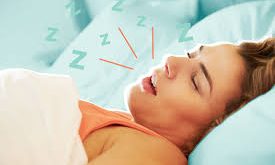Article by Dr. JV Srinivas, Lead Consultant – Orthopedics & Joints Surgery, Aster RV Hospital
Osteoporosis is a disorder in which the density of bone decreases, causing it to lose strength and become brittle. Osteoporosis causes unusually porous, collapsible bone, similar to that of a sponge. The skeleton is weakened by this condition, which leads to frequent fractures (breaks) in the bones. A normal bone is made up of protein, collagen, and calcium and they all contribute to its strength. Osteoporosis-affected bones can shatter (fracture) even with small traumas that would not usually cause a bone to break. Although osteoporosis-related fractures can occur in nearly every skeletal bone, they are most commonly found in the spine, hips, ribs, and wrists.
Symptoms of osteoporosis- there are no indicating symptoms hence the title ‘The Silent Disease’. But one can look out for the following indications; height loss (getting shorter by an inch or more), change in postures, asthma (smaller lung capacity due to compressed lung capacity), fractures in bones, lower- back discomfort.
Some of the factors that increase the risk of developing osteoporosis are:
- Gender- women have a higher chance of having osteoporosis as they have smaller bones and lower peak bone mass compared to men. Men still are at risk particularly after the age of 70.
- Age- Bone loss accelerates as you become older, but new bone formation slows. The bones may deteriorate over time, increasing the chances of developing osteoporosis.
- Size of the body– Slender, thin-boned women and men are more likely to develop osteoporosis than larger-boned women and men because they have less bone to lose.
- Race- Osteoporosis is more prevalent among Caucasian and Asian women. African-American and Hispanic women, on the other hand too face this. In fact, after a hip fracture, African-American women are more likely to die than white women.
- Genetics– Researchers have shown that if one of your parents has had an osteoporosis or hip fracture, your chance of developing osteoporosis and fractures may be increased.
- Hormonal changes. Certain hormone deficiencies might raise your risk of getting osteoporosis. As an example: After menopause, women’s estrogen levels drop. Low estrogen levels caused by an atypical lack of monthly cycles in premenopausal women owing to hormone abnormalities or high amounts of physical exercise. Men’s testosterone levels are low. Men who have diseases that induce low testosterone are at risk for osteoporosis.
- Diet- A diet deficient in calcium and vitamin D might raise the chances of developing osteoporosis and fractures. Excessive dieting or a lack of protein may also raise the risk of bone loss and osteoporosis.
- Lifestyle- Low levels of physical activity and lengthy periods of inactivity can both contribute to accelerated bone loss. They also put you in poor physical shape, increasing your chances of falling and fracturing a bone.
- Chronic excessive alcohol use is a substantial risk factor for osteoporosis.
- According to research, smoking is also a risk factor for osteoporosis and fracture.
Treatment for Osteoporosis includes proper nutrition, changes in your way of life, exercise, fall avoidance is important in order to avoid fractures, medications.
Diagnosis for osteoporosis
Before any problems arise, your healthcare practitioner might schedule a test to provide you with information about your bone health. Dual-energy X-ray absorptiometry (DEXA or DXA) scans are other names for bone mineral density (BMD) examinations. These X-rays utilize extremely small quantities of radiation to evaluate the strength of the bones in the spine, hip, and wrist. Regular X-rays will only reveal osteoporosis if the illness has progressed significantly. Women over the age of 65 should undergo a bone density test. For women who have osteoporosis risk factors, a DEXA scan may be performed sooner. Men over the age of 70, as well as younger men with risk factors, should get a bone density test.
When you have osteoporosis, it’s critical to avoid fractures since they can lead to other medical issues. When your health care practitioner tailors a programme to your specific needs, exercise can help avoid fractures caused by falls and increase bone strength. Before beginning any fitness programme, speak with your doctor or physical therapist if you have osteoporosis or bone loss. Furthermore, avoiding falls helps to avoid fractures. Falls raise your chances of breaking a bone in your hip, wrist, spine, or other skeleton.
 Newspatrolling.com News cum Content Syndication Portal Online
Newspatrolling.com News cum Content Syndication Portal Online






